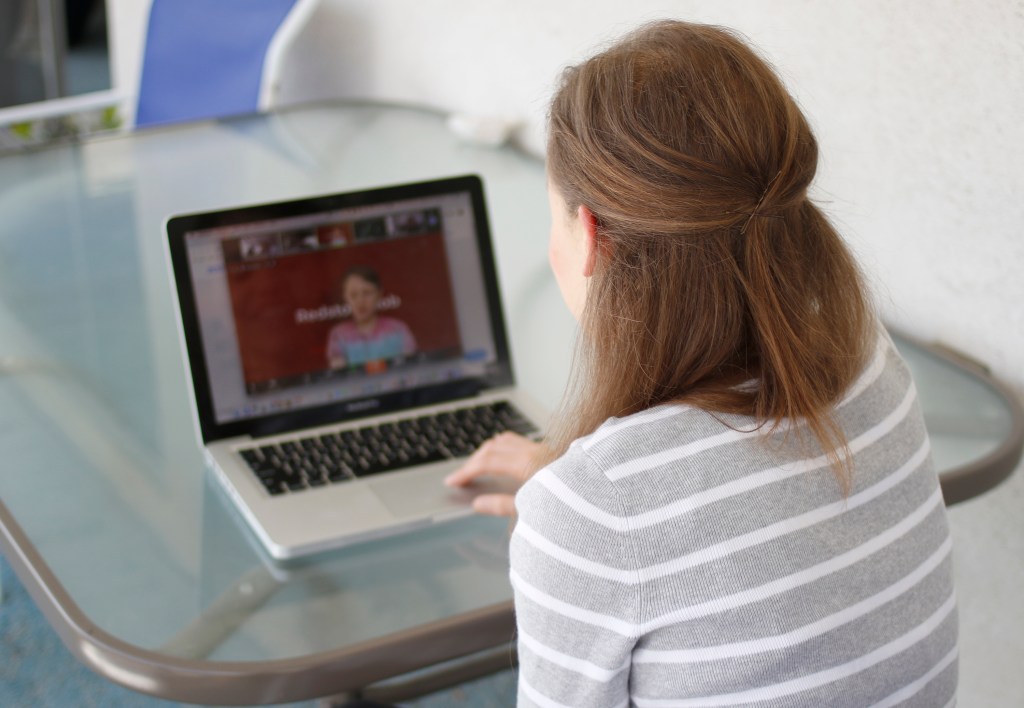Finding Comfort and Calm in Remote Teaching
A Marymount School Teacher Reflects on the Coronavirus Classroom

“It’s Sunday today, right?” I ask my roomies with a smile, peeking up from under our dusty coffee table. We’re in the midst of another quarantine cleaning project, scrubbing away to pass the time.
“It’s Saturday!” they laugh excitedly. My heart sinks a little.
Although this isn’t my typical weekend mindset, teaching has often been a balm to soothe the wounds of life. Through breakups, anxieties, or natural disasters, its healing power never fails to get me out of my head and into the present moment.
Nowhere have I felt this more intensely than in the past few weeks of social distancing. Like other schools in the district, Marymount, where I teach English to 6th and 7th graders, has switched to remote learning since March 16. We will continue to do so as long as necessary to halt the spread of COVID-19.
Lost in an unending washing machine of media churning out facts about the coronavirus, I’ve felt suffocated, tossed, and turned through the news cycle, yet never able to come out clean. Teaching is a welcome breath of air. Yes, there are new challenges to confront: ensuring everyone has the time, support, and access to grasp the material, figuring out how to assess learning most effectively, and maintaining our connection as a classroom community.
Instead of writing the day’s schedule on the whiteboard, I’m scheduling each lesson into our Google classroom. Instead of greeting students in person, we’re Zooming in. I’ve never been a fan of FaceTime or Skype, so prior to our first Zoom meeting, I had little faith that it would be able to capture an ounce of that in-person classroom magic. However, as soon as my inbox read, “Your meeting attendees are waiting!” I got the same butterflies that swarm before teaching a brand-new lesson.
First, we did a check-in, sharing roses and thorns of the remote learning experience so far. It felt like a group therapy session, realizing we had similar highlights (“sleeping in,” “yummy meals”) and lowlights (“missing friends,” “fear of virus”). At the same time as this horrific pandemic escalates, my students are making snickerdoodles, turning a year older, reading the third Harry Potter, or dealing with the loss of a pet. It’s heartbreaking, silly, joyful, this new life. It’s a wider vantage point than my apartment or the news can provide, and like most things, best when shared. We went on to discuss our recent novel, delving into another world of imagination, taking a welcome break from our own.

Colleagues who teach math have figured out how to film themselves working out equations with their document camera while sharing the screen with their students and Zooming in for questions. Our lower-school teachers are setting up their own tripods at home, starting YouTube channels, and dressing up in all kinds of costumes to put a smile on students’ faces. Social-emotional learning is being incorporated into our small group advisory meetings. I’m finding that whatever platform we use to teach, whether its Zoom, Flipgrid, Google slides, even email, the same rule applies as in the classroom — if your heart’s in it, the students will feel it.
For a recent writing assignment, I referenced Mr. Rogers’s famous piece of advice during turbulent times to “Look for the helpers,” and asked my students to write about any “helpers” they’ve seen during the pandemic. Waking up to another morning of uncertainty, worrying about my parents, nurse sister, and friends and the world, I opened up Google classroom to check in on their responses.
Reading through their answers — “My mom,” “doctors and nurses,” “everyone staying home,” “people growing gardens and giving away fruits and veggies” — my heart feels a little lighter. I start to respond to each doc with kudos and questions, the dust of my mind clearing out. I feel an excitement and sense of purpose in my fingertips.
Living through this, who knows what wisdom these young minds will lend to our future? It’s clear who the “helpers” are in my world: my students, who, even virtually, continue to teach me every day.
At the Santa Barbara Independent, our staff is working around the clock to cover every aspect of this crisis — sorting truth from rumor. Our reporters and editors are asking the tough questions of our public health officials and spreading the word about how we can all help one another. The community needs us — now more than ever — and we need you in order to keep doing the important work we do. Support the Independent by making a direct contribution or with a subscription to Indy+.



You must be logged in to post a comment.